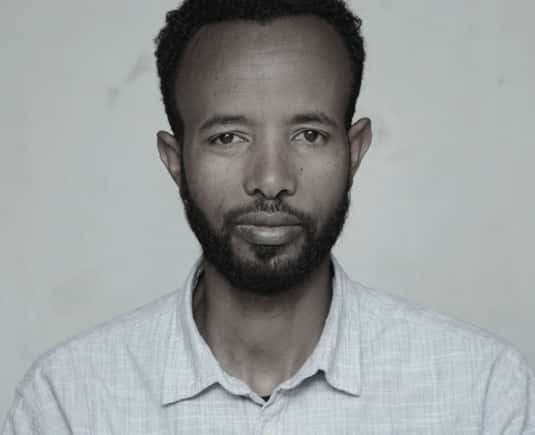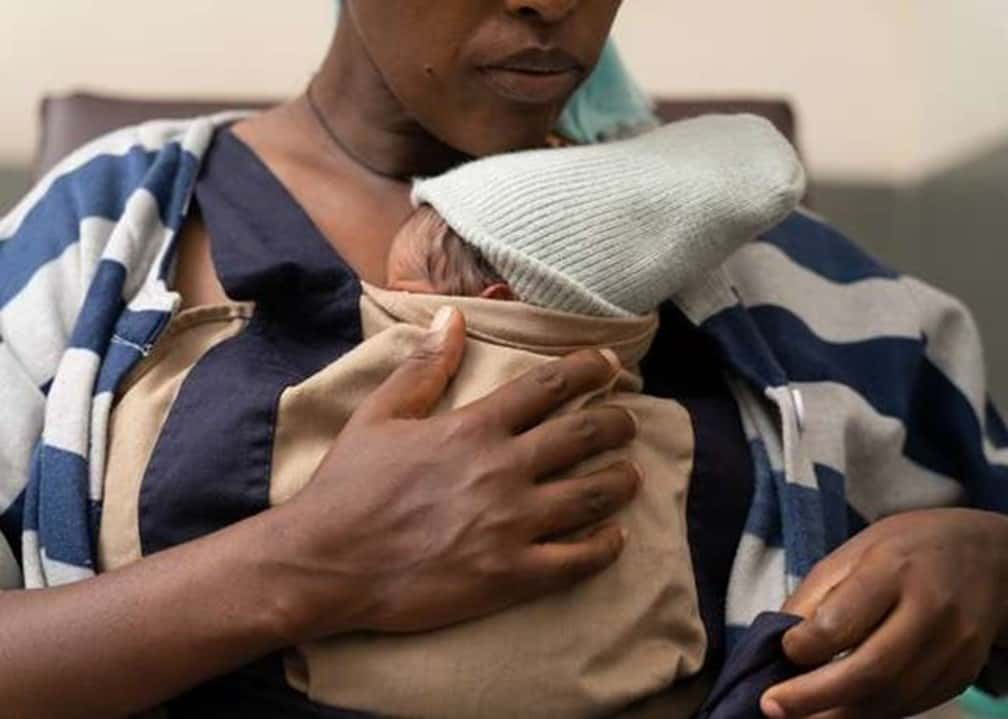Partner Q&A: Evolving care for small and sick newborns in Ethiopia
A conversation with Abiy Seifu Estifanos, Assistant Professor, Addis Ababa University

A conversation with Abiy Seifu Estifanos, Assistant Professor, Addis Ababa University

Dr. Estifanos is a public health specialist with 15 years of experience in maternal and newborn health, quality improvement, and health systems strengthening. He is an assistant professor and founder of the Center for Implementation Sciences (CIS) in Health, School of Public Health, Addis Ababa University. Aiby leads several large-scale projects including a consortium supporting the Ministry of Health in Ethiopia to implement the Saving Little Lives program, funded by the World Bank’s Global Financing Facility and coordinated by UNICEF Ethiopia. He is currently working on his PhD thesis.
The Saving Little Lives program was designed to accelerate the scale-up of interventions for preterm and low birth weight babies across 290 hospitals in Ethiopia. The program has been integrated with NEST 360 to become Saving Little Lives 360 which aims to scale-up an enhanced bundle of lifesaving interventions targeting sick and small newborns in Ethiopia.
In Ethiopia, the exact number of deaths from prematurity is unknown. However, globally, around 80% of neonatal deaths in low- and middle-income countries occur among preterm births. In Ethiopia, around 10% of births are estimated to be preterm, which amounts to around 400,000 preterm births annually. Before 2005, Ethiopia did not have a child health strategy. The Lancet publication in 2005 played a role in changing that. The government developed a 10-year strategy for child survival, which was expanded in 2015 to include newborn survival. At that time, the causes of neonatal mortality were not well understood. In 2019, a study on major causes of mortality among preterm neonates in Ethiopia provided better insights into the causes of mortality among premature babies. The current strategy aims to address these drivers of mortality.
We learned that Kangaroo Mother Care (KMC) can save the lives of preterm newborns. Through implementation research conducted from 2016 to 2019 in collaboration with WHO, we successfully tested the scale- up KMC in Ethiopia. At that time, KMC was implemented only on stabilized premature babies which on average was about three days after admission to the neonatal intensive care unit. However, around 30% of the preterm babies were dying before stabilization, raising concerns about the effectiveness of the intervention in preventing early preterm death. In 2019, we expanded the care package to address early mortality drivers. This included support for respiratory distress syndrome, managing newborn infections, resuscitation assistance, feeding support, and thermal care. These interventions were extended to labor and delivery units, resulting in three care packages: one for labor and delivery units, one for the neonatal intensive care unit, and one for initiating and continuing KMC in stable babies. We called this the "minimum care package," which also incorporates quality improvement processes and data utilization.
 Image: A mother gives Kangaroo Mother Care to her newborn at a facility in Ethiopia.
Image: A mother gives Kangaroo Mother Care to her newborn at a facility in Ethiopia.
While we were implementing the Saving Little Lives program in Ethiopia, the NEST 360 program was also addressing small and sick newborn care in Tanzania, Nigeria, Malawi, and Kenya. In Phase 2, the NEST 360 program wanted to expand to Ethiopia to maximize the impact of the program. We have now partnered with NEST 360 under the Ministry of Health’s leadership to develop a program that incorporates both, called Saving Little Lives 360 (SLL 360).
What sets Saving Little Lives apart is the scale of implementation. We implemented it in 290 hospitals across seven regions, which is a significant undertaking. We also faced challenges such as the COVID pandemic, armed conflicts in different parts of the country, and other external factors. As a result, we were not able to provide intensive support to each individual hospital like the NEST 360 program did, which focused on fewer hospitals but with more intensive support.
In the new program, Saving Little Lives 360, our aim is to cover all hospitals and not leave any behind, while demonstrating high impact in a select number of facilities through the implementation of a comprehensive package and intensive support. Currently, we have received funding from the Gates Foundation to support additional hospitals within the existing 290. This is to ensure continuity and build upon the progress made in the last four years, as the GFF grant will end by the end of this year.
The Ministry of Health has ownership of the program, and they are leading and driving the implementation. Those of us from universities (Addis Ababa, Mekelle, Hawassa, and Emory University) are not directly implementing, but we're supporting the ministry and regional health bureaus.
One of the key interventions we have is clinical mentorship. We recruit mentors and provide them with training on mentorship and the minimum care package. They then go to the facilities to provide clinical mentorship. In this process, we used innovations like the NeoNatalie Live simulator, NeoBeat heart meter, Moyo Fetal Heart Monitor, and other tools for both training and clinical care. We mentor two groups of providers: labor and delivery providers and neonatal unit providers.
With SLL 360, there are additional interventions that were not part of the previous program. For example, we have introduced a biomedical engineering component where we train biomedical engineers and technicians to provide preventive and curative maintenance of devices and technologies in neonatal care. This includes installation and support for facilities. Integrating these experts into the neonatal care team is a significant change in SLL 360.
In the next phase, we also envision integrating learnings from the Safer Births program that has been successful in Tanzania, including simulation-based training, into our program. While we have attempted simulation training before, it was not done extensively because the scale of the project was so large. However, we have used tools like the NeoNatalie Live, NeoBeat heart rate meter, and the Moyo Fetal Heart Monitor for training purposes. The mentors used these tools during their visits to the facilities.
In the next phase, we will also strengthen quality improvement efforts, and clinical mentorship will be more frequent compared to the previous program. Moving forward, we aim to structure simulation-based training better and create dedicated stations in facilities where providers can practice on-site simulation-based training. We are exploring how we can implement this effectively.
I recently visited one of these facilities and observed immediate Kangaroo Mother Care being practiced in the newly established mother-newborn intensive care unit (M-NICU). Initially, there was resistance and confusion due to this new way of doing things. Allowing mothers in the neonatal ICU to provide care 24/7, including CPAP, on their chest was a significant change. However, once they started implementing it, confidence grew, and the mothers were very happy.
During my visit, I spoke to one of the mothers in the unit, and she expressed her joy about being able to participate in caring for her baby. I also asked one of the nurses about her thoughts on this new approach. She described it as a highly impactful program. She told me that in the past, they rarely saw babies born before 30 weeks survive. However, since implementing this new approach, even babies born as early as 27 weeks have been surviving. Hearing these stories from healthcare providers highlights the true impact of this intervention.
To make a significant impact, collaboration is essential. Without collaboration, there will be fragmentation, wastage of resources, and duplication of efforts. We often underestimate the importance of collaboration and tend to focus on our own perspectives. However, true impact cannot be achieved without meaningful partnerships. The Ethiopia ministry, for example, is doing well in terms of bringing different partners together. Building partnerships is a critical aspect of global health, particularly in maternal and newborn care.
In my experience, to ensure the success and sustainability of partnerships and programs like Saving Little Lives, there are five key factors to consider:
I think that by considering these factors, programs like Saving Little Lives can be implemented successfully in other countries and sustained for long-term impact.